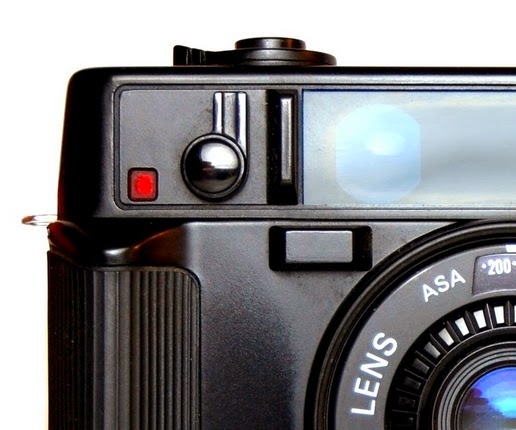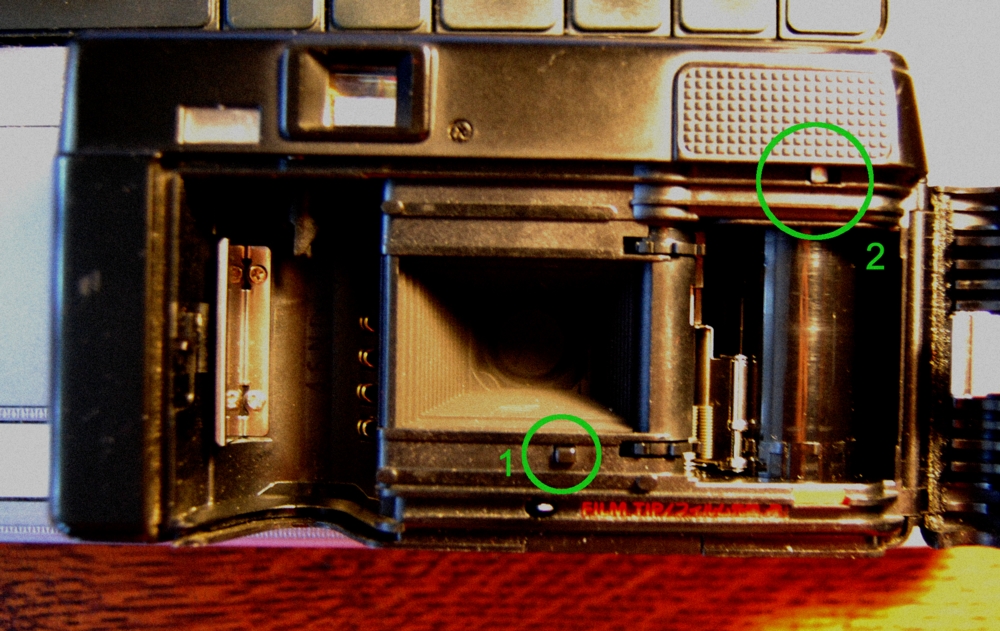Figuring out the focus point of a fixed focus and contradictory Olympus XA1
The above is the official corporate portrait of the odd sheep of the XA family of compact cameras by Olympus.
What makes it odd it is a fixed focus camera.
It has the classic Zuiko lens tag. It sports the 35mm lens, like the rangefinder Olympus XA. It even has the excellent clamshell design.
Did I mention it has a fixed focus lens. In other words you can't focus it.
The manual says you the camera will capture subjects between 5 feet and infinity in focus, but this is, at the camera's widest aperture, a ridiculous concept.
For those who may not know, the wider the aperture the more shallow the depth of field, that is the range at which a subject will appear in focus. It can be deep or it can be shallow. Whatever is in the field or range will appear in focus.
There are three ways to increase your depth of focus.
The further away one focuses on something, the wider the depth of field becomes. More will be in focus if it is far from the camera.
Another way to increase depth of field is to decrease the aperture. The smaller the aperture the wider the range where subjects will appear sharp.
Another way to increase the depth of field is to decrease the focal length of a lens. Wider angled lenses have deeper fields of focus. Telephoto or zoomed lenses have shallower ranges of focus ...phew...
Unfortunately the only variable that applies to the XA1 is the aperture. The lens length (not the physical length but you know what I mean) and focus point are fixed on the rascally camera.
It's complicated but for the Olympus XA1 to have an object in focus at 5 feet at an aperture of f4, the fixed lens would have to be focus at something 6 feet. However, at f4 the furthest something would be focused would be 7.28 feet.
How do I know this? Well I used the Online Depth of Field Calculator!
Plugging a set of numbers based on the focal length and possible apertures for the XA1, one soon discovers there is no focus point at f4 that will cover 5 feet to infinity as specified in the XA1 manual.
However, I am beginning to suspect the XA1 focal range was calculated at the classic street shooting aperture of f16, good for a sunny day. One can get away with a fixed 35mm lens at f16 if the lens is focused at the correct point.
At f16, punching the numbers into Online Depth of Field Calculator by the DOFMaster, we do get a corresponding depth of 5 feet to infinity...(4.96 feet but close enough)...
IF the lens is set for 12 feet!
Now here's the rub. When one shoots the XA1 with a flash,
(UPDATE April 21, 2011 - I am incorrect regarding the fixed aperture in flash mode. The selenium meter is in control of the aperture even in flash mode, which means, the aperture will stop down in bright conditions. Good news.)
The flash, the A9M that often comes with it, can only illuminate up to 14.8 feet with 400 ASA film (again complicated).
Back to the calculator...that would mean only objects between 8.86 feet and 18.6 feet would be in focus at f4. But only items between 8.86-14.8 feet would be properly illuminated by the flash.
Not the best product design by Olympus.
But there's something about this camera. I just want to shoot with it. I suppose it's odd gives it some charm.
Raw specifications for the camera:




Comments
I've fiddled with the camera some more. The best application is to use it on sunny days (like the beach) with the flash on. This is what I do for my Beach Series with my other P&S cameras. Results can be excellent. Or so I hope. Keep the principal subject under 14 feet though!
Avec 35/4 et 0,070, à 3,5 mètres on a une zone de netteté de 1.95 m à 16.8 m, selon le calculateur.